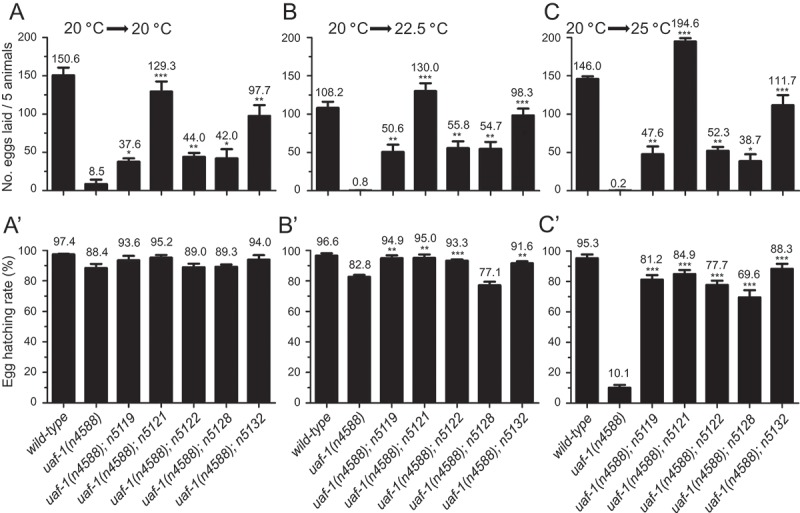Figure 2.

n5119, n5121, n5122, n5128 and n5132 can suppress the fertility and egg-hatching defects of uaf-(n4588) mutants at high temperatures.
Synchronized L4 animals grown at 20 °C were kept at 20 °C or moved to 22.5 °C and 25 °C. Eggs laid in 24 hours were counted and the hatching rates of the eggs 24 hrs after were quantified. (a, a’) At 20 °C, uaf-1(n4588) mutants laid significantly fewer eggs, which was improved in five double mutants. Most eggs laid by uaf-1(n4588) single mutants or the double mutants could hatch. (b, b’) Egg-laying and egg-hatching rates at 22.5 °C. The phenotypes are similar to those at 20 °C. (c, c’) Egg-laying and egg-hatching rates at 25 °C. The total numbers of eggs laid by five animals (a, b, c) and the hatching rates of these eggs (a’, b’, c’) are indicated on top of each column. Genotypes are indicated at the bottom. Results were based on 3 to 6 biological replicates. Because uaf-1(n4588) mutants lay few eggs, we used a massive number of mutants to generate enough eggs for the egg-hatching analysis in A’, B’ and C’. Statistics: paired two-tailed Student’s t-test. *: p < 0.05; **: p < 0.01; ***: p < 0.001.
